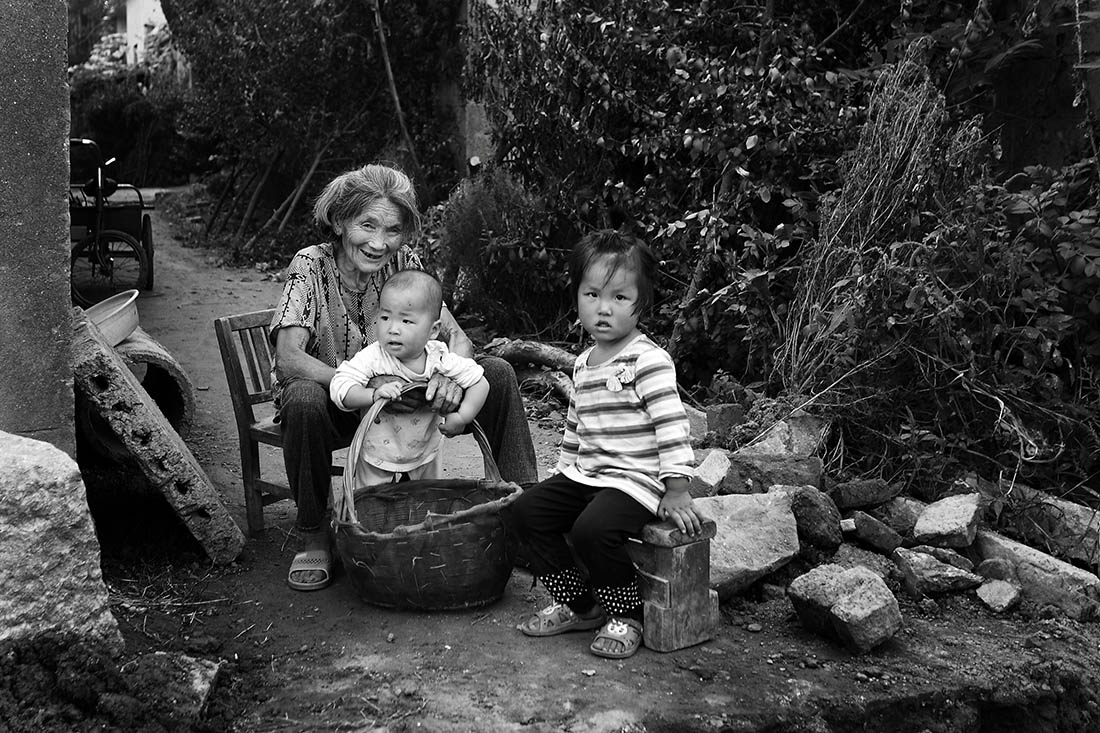LI WEI: Community model offers new option for poverty relief

The majority of the left-behind population is made up of women, children and the elderly, who have less capacity to be self-sufficient and are more likely to become poor.
Since the establishment of People's Republic of China, the nation has made remarkable achievements in poverty relief. One important reason is the transition that began in the mid-1980s from the single mode of direct input of money and goods to the combination of input and development.
However, some obstacles to further progress in the field remain. The shortcomings of systems and the changes occurring in rural society are sharpening the contradiction between the "developmental approach" and the "precisely targeted approach," which is the basic principle of poverty alleviation.
The developmental approach attempts to increase the self-sufficiency of the poor via various projects and eradicate poverty by developing the local economy. The precisely targeted approach is aimed at those suffering absolute poverty that is attributable to such factors as physical disability, chronic disease and adverse natural conditions but not those whose poverty is related to lack of initiative.
If the developmental approach were to follow the principle of precise targeting, it would be impossible to carry out projects. For the development projects to succeed, high- and middle-income people with a high capacity for self-sufficiency should also be included among the targets, but this would go against the precision principle. The paradox can be attributed to the incompleteness of the anti-poverty system and the siphon effect of cities on rural areas.
First, the quota distribution is arbitrary, and the poverty standard is rigid. Quotas for impoverished households are distributed from the highest to the lowest administrative levels based on rough government estimates. There's no clear algorithm, and differences in economic and social development in counties, townships and villages are neglected, leading to imbalance in quota distribution.
The mechanized standard gives many people less of an incentive to overcome poverty. In some poor villages, people have become reliant on assistance. As long as they do not expand productive investment and increase their consumption level, households can keep their "poor" status. As a result, farmers who hope to escape poverty by developing planting and breeding industries do not have access to anti-poverty funds. However, poor people who have obtained funds lack incentives to increase productivity. They choose to save the funds instead of spending or investing, leading to the inefficient allocation of funds and the failure of poverty relief projects.
Second, with rapid development of urbanization and industrialization, productive factors, such as labor, capital and technology, flow from rural areas, in particular poor townships and villages, to cities. And the majority of the left-behind population is made up of women, children and the elderly, who have less capacity to be self-sufficient and are more likely to become poor.
Of those left behind in the countryside, impoverished households are the least capable of development, and some are even completely unable to develop. Thus, it is necessary to include non-impoverished households into the targets so they can take the lead in helping impoverished households escape poverty, which leads to the phenomenon of imprecise targeting. Such a method has been used by governments at the grassroots level in recent years to resolve the contradictions between the developmental approach and precise targeting.
However, imprecise targeting may cause the shift of poverty relief resources to non-agricultural industries or to urban areas. Though this can also promote local economic growth, a possible outcome would be immiserizing growth, a phenomenon in which the income growth rate of poor people lags behind the annual growth rate. If the resources are used to nurture agriculture, improve the life of farmers and speed the development of rural areas, poor population can share fruits of the economic growth by working for non-poor people or imitating their production activities. Therefore, poverty relief funds can be only applied to agriculture-related issues in order to prevent the flow of resources to other places.
A more effective way is to adopt a community-based approach in which the targets are communities (geographically-formed natural villages or villagers groups within natural villages) instead of households, the criterion for assistance is to look at the average annual income of the community instead of the annual income of a single household, and projects are aimed at developing community economy, in particular the modern agriculture, which plays a vital role in reducing poverty rather than developing the local economy. Thus, the community will replace poor households as the recipient of poverty relief resources, and its members can decide for themselves how to use these resources. As a consequence, both impoverished and non-impoverished households within a poor community can have access to supporting policies.
The community-based approach has several advantages. It can overcome resource constraints in the development of a single household, ease income disparities and help stabilize society. In this sense, the community-based approach will become a mainstream way to combat poverty and guide future policy making.
Li Wei is from the Institute of Development Strategies at the Party School of the CPC Jiangxi Provincial Party Committee.
